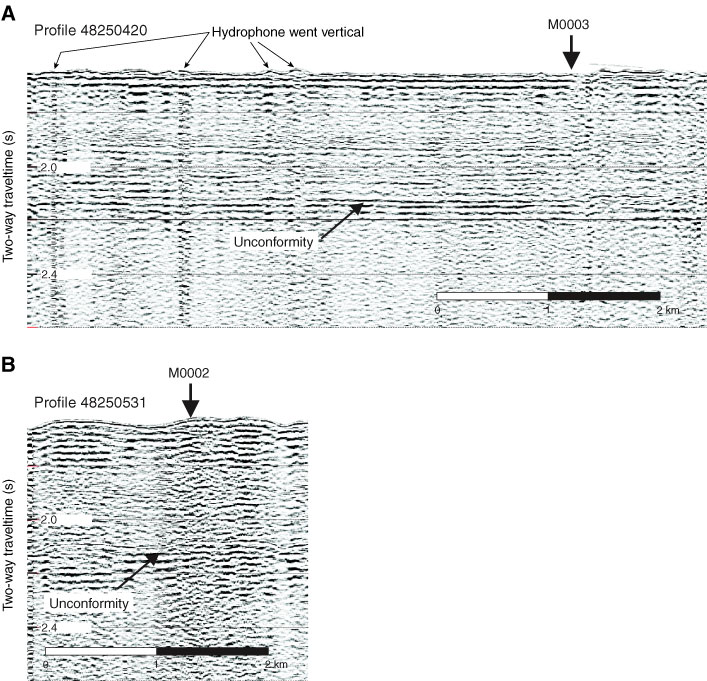
Figure F10. Seismic reflection profiles (A) 48250420 and (B) 48250531. See Figure F7 for the location of the profiles. Because of the high level of ship noise recorded together with the seismic reflections, a 10-fold running stack was applied to the seismic recordings. No band-pass filtering was applied, but a 20 Hz, 6 db, high-pass filter was applied to reduce hydrophone towing noise and low-frequency ship noise. The intermittent reduction of the ship’s speed to below 0.5 kt caused the hydrophone to temporarily sink to a near vertical position. This resulted in recording periods when a wavy seismic record resulted. When the hydrophone was positioned properly, the data showed the true nature of the relatively flat seafloor reflection. Approximately 0.5 s below the seafloor reflector and slightly above the unconformity reflector, a faint ghost reflection of the seafloor is apparent. This is possibly an instrument artifact caused by the delayed closure of the air gun related to the wave shape kit. However, this artifact does not obscure the profiles enough to limit interpretations.

Previous | Close | Next | Top of page